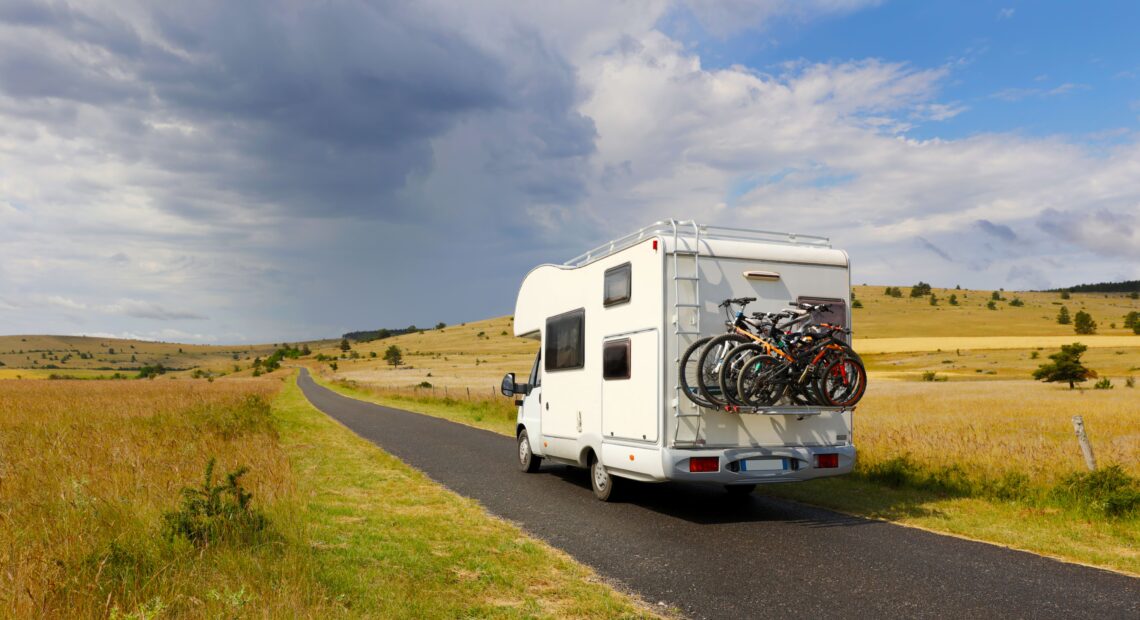If you’ve just bought a motorhome (from Couplands, of course!) but haven’t yet got your sea-legs with the lifestyle, the prospect of setting sail on your very first trip might be a bit daunting. To help make your experience smooth and enjoyable, this edition of our blog features our comprehensive guide to tips and tricks for beginners...
1. Plan your route
Before you take the plunge and set off on your maiden voyage, do some thorough route planning. While the idea of being spontaneous can be a big part of the motorhome adventure, it’s always crucial to have at least a general idea of where you're going! You need to know that the area you’re travelling to is able to accommodate a large motorhome (if that’s what you’ve got). Use a motorhome-specific sat-nav (or app) to help you plan a route that can handle your vehicle’s size.
2. Book your campsite
Booking your campsites in advance means that you have a safe place to stay, where the practical facilities you might need are provided. Make sure to book in advance as you don’t want to be turning up only to find that there’s ‘no room at the inn’ - especially during peak travel times. Make sure that when you’ve come up with an itinerary it includes campsites which have the necessary facilities (things like electric hook-up and waste disposal). Not every location has motorhome-friendly campsites. Booking in advance also means you’ll have some peace of mind.
3. Use levellers
This may surprise you, but not all ground is perfectly flat! When you park your motorhome on uneven ground, you’ll need levellers to keep the vehicle stable. Levellers are small portable ramps or blocks that you can set down on the ground and drive your motorhome onto to prevent it from tilting. A level motorhome means you’ll be comfortable while you’re sleeping, sitting down or moving about in your motorhome, it also means things like cooking are easier. Also, in common with domestic fridges, your motorhome fridge might not function correctly if it’s on the tilt. Levellers are very easy to use and so they’re an essential accessory for any trip.
4. Understand your dimensions
Although there are some basic similarities, driving a motorhome is not quite like driving a car. Even if you have a relatively compact motorhome, knowing the vehicle's height, width and length are much more critical than when you’re driving a car, especially when you’re navigating narrow roads with bends and bridges, or trying to park up. Low bridges and tight spaces can quickly become hazards if you don’t know your motorhome’s exact measurements. Note these dimensions and keep them handy in the cab for easy reference when you're out and about.
5. Practice driving
As we have just mentioned in the previous section, driving a motorhome requires different skills to driving a car - particularly when it comes to turning, reversing and parking. Before you head out on your first long journey, take some time to practice driving your motorhome on quieter roads or large car parks. Learn to drive using the side mirrors and reversing cameras (if available) and get a grip of the motorhome’s turning circle. Motorhomes are slower to manoeuvre than cars, so become familiar with the extra time and space you need when navigating tight corners, parking or pulling out
6. Pack efficiently
One of the joys of owning a motorhome is that you can take along home comforts on your trips, so your mobile space becomes much more familiar. However, it’s very important to pack thoughtfully. Overloading can not only affect your motorhome’s fuel efficiency but also its handling. Stick to essentials – make sure you have sufficient clothing, food, toiletries and tools. Include things like folding chairs, a portable BBQ and a compact table so you can maximise outdoor comfort without taking up too much space inside (or in the motorhome’s garage space, if it has one).
7. Electric hook-up
Most motorhomes come equipped with electrical systems that allow you to connect to hook-ups at campsites for power. Understanding how to use these systems is important. When you arrive at your campsite plug the electric cable into the site’s power source. Make sure you don’t overload the system by using too many appliances at once. Familiarise yourself with the different power wattages available and how they relate to the various appliances you're running onboard your vehicle.
8. Waste disposal
Probably the least glamorous aspect of the motorhome life is that you must deal with the waste you produce. Most modern motorhomes are equipped with toilet and grey water tanks, and these must be emptied regularly at designated disposal points. Make sure you know where to find these facilities at the campsites you visit - and never ever dispose of your motorhome waste inappropriately. Carry biodegradable toilet chemicals, as these are often required by campsites, and they can help reduce unpleasant odours.
9. Monitor water
Your motorhome has two main water tanks: one for fresh water and one for grey water (ie. the used water from sinks and showers). Keeping track of your water levels is important, especially if you're off-grid or staying at a basic campsite. Always fill your freshwater tank before you leave, and empty your grey water tank at the appropriate disposal facilities. Many campsites offer water fill-up and disposal points.
10. Carry a tool kit
Even the best-maintained motorhomes can occasionally run into mechanical issues. It’s a good idea to have a basic toolkit onboard. This will include hand tools such as screwdrivers, wrenches, a hammer and pliers. Carrying spare fuses, bulbs, a tyre pressure gauge and tyre repair kit can also help in certain scenarios. If you’re planning a longer first trip, consider learning how to do minor repairs in advance, such as changing a tyre or fixing a loose connection. These skills may help you to avoid being stranded.
11. Gas system
Most motorhomes have gas systems for cooking, heating and, sometimes, hot water. These systems typically rely on LPG bottles (liquefied petroleum gas) and these need to be replaced or refilled periodically. Learn how to check the gas levels, and how to safely change the bottles. Check the itinerary you’ve made and work out where to buy replacement gas bottles along the way - not all petrol garages stock them.
12. Insurance and breakdown cover
Before you set off on your first motorhome journey, it’s essential to make sure you’ve got the right insurance and breakdown cover. Normal car insurance won’t cover a motorhome, so you’ll need to take out a policy specifically for this type of vehicle. Similarly, the type of breakdown cover you might have for your car will probably not include motorhomes (due to their size and weight). Make sure your policy covers motorhome-specific breakdowns and provides recovery services - especially if you plan to travel abroad (unlikely for your very first trip, but worth mentioning as you never know).
13. Secure loose items
One of the most common mistakes new motorhome owners make is forgetting to secure loose items before they set off. Anything that is left on worktops or tables (cups, plates, cutlery, books, or devices) will move around while you’re on the road. You should always check that cupboards, drawers and doors are securely shut before you set off and stow any loose items safely to prevent damage (or even injury).
14. Fuel consumption
Motorhomes are heavier and larger than normal cars so, therefore, they need to consume more fuel to move. To make your trips more cost-effective, drive at a steady pace, avoid rapid acceleration and stick to speed limits. Some motorhomes come with a built-in ‘trip computer’ that can track and provide information on your fuel consumption. This should help you adjust your driving habits to save on costs. Also, plan fuel stops along your route, particularly if you're travelling through remote areas. Use the itinerary you prepared to cross reference with the internet for information on the location of petrol garages along your route etc.
15. Weather-appropriate gear
The British weather can be unpredictable. Summer might not be the blast of sunshine and heat that you think, so even though it’s the middle of the year you should always pack for a range of conditions. Of course, you can drive a motorhome all year round – so bring waterproof clothing, extra blankets and sufficient layers if you're travelling during the colder months. Even when the heating system is on, a motorhome might be a little chillier than you expect at night, so having a few extra comforts can make a big difference.
16. Tyres
Before you set off on any motorhome trip inspect the tyres for wear, and make sure they’re inflated to the correct pressure. Worn or under-inflated tyres can lead to more difficult handling and even an increased fuel consumption, and over-inflated tyres can result in a bumpy ride and uneven tyre wear. Keep a tyre pressure gauge in your motorhome and check the pressure regularly, especially on those longer trips.
Motorhoming is a fantastic way to explore, offering the freedom to travel wherever the road takes you, with all the comforts of home at your fingertips. On your very first journey you’re likely to be really excited and in love with the road – but you should definitely take note of all of the tips and tricks we’ve detailed in this edition of the Couplands blog. They’ll ensure you’re well-prepared to properly enjoy your adventure.

